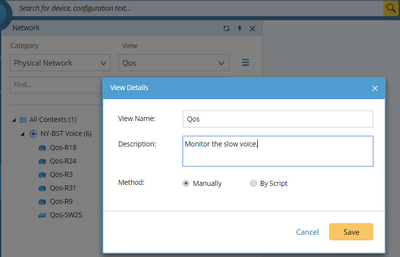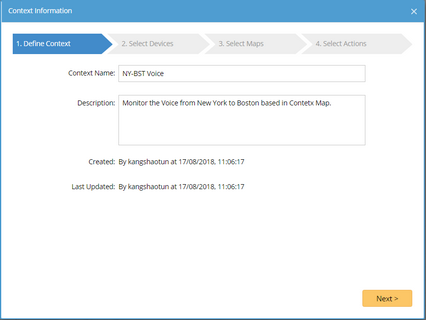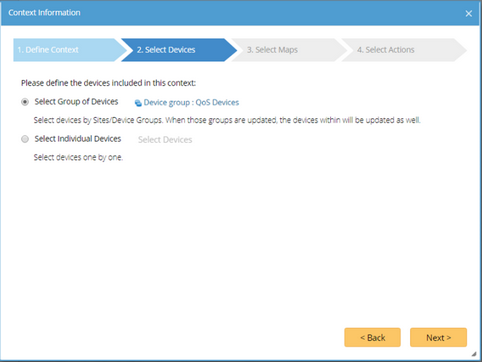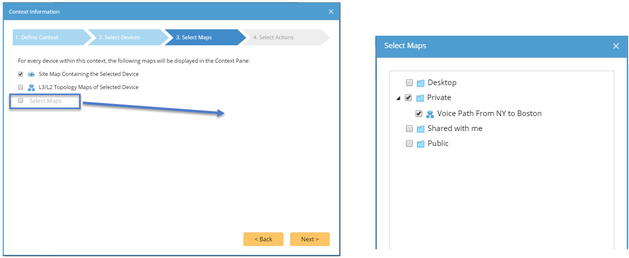Predefining a Network Context
Example: Create a voice context for one of the main voice flows in your company.
1.Click Network on the taskbar.
2.Under the Physical Network category, click the View drop-down list to create a new view type QoS.

Note: The context created by script needs to be benchmarked before you can see the specific map.
3.In the QoS View, click the All Contexts node to select New Context from the drop-down menu.

4.In the pop-up Context Information dialog, proceed with the following steps to define the context information.
1)Define the name and description of the context. Click Next.

2)Select devices either one by one or from a predefined group. In this case, you can predefine a QoS device group and then add the included devices. Then click Next.

3)Select context maps. The optional maps contain site maps and Layer 3 or Layer 2 topology maps relevant to the target devices. You can also select a predefined map as needed. In this case, you can calculate the voice flow path from NYC to Boston and add it as a context map. Click Next.

4)Select context actions. You can define actions for a specific map and a class of map (such as site map and device group map). In this example, select the data view QoS Design (to highlight devices with QoS configured) and the runbook Troubleshoot Slow Voice (to monitor QoS interface parameters and highlight QoS configuration and QoS Interface Queuing Strategy). Then click Save.

Tip: You can predefine context actions in the Context Action Manager.
